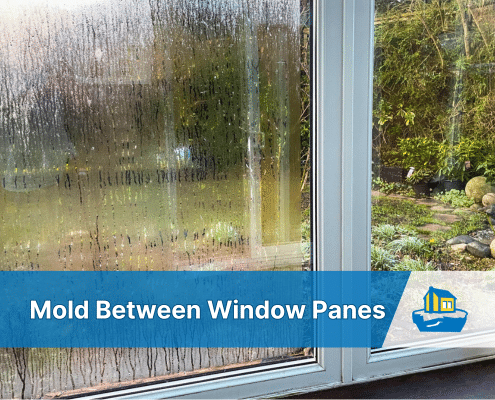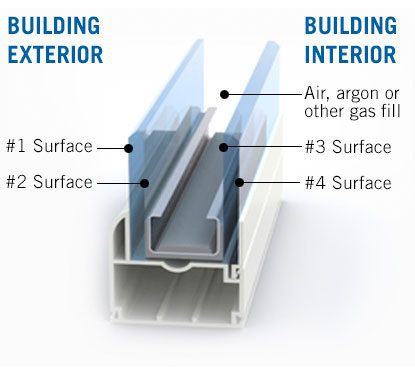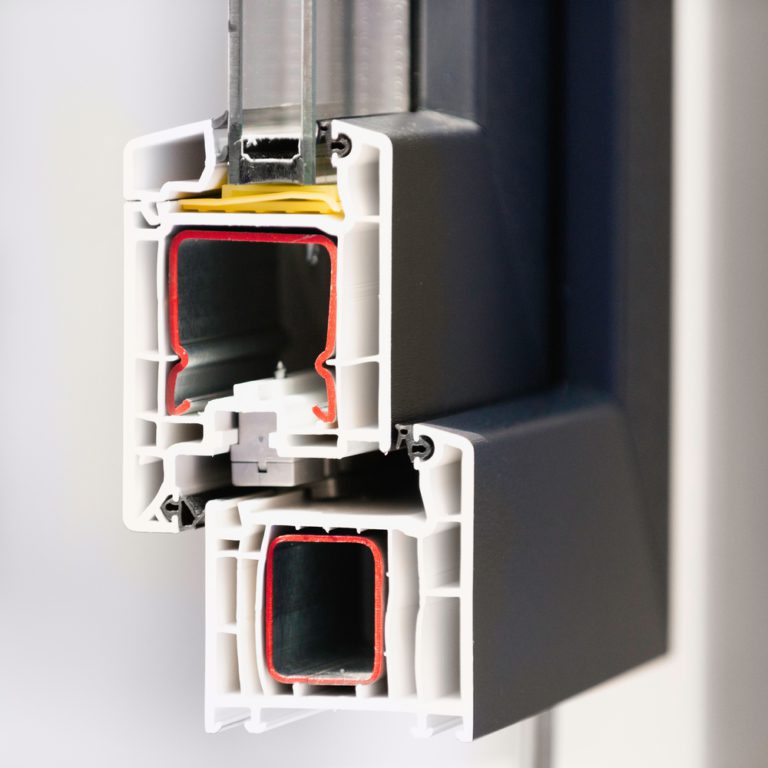4.9 1890+ Google Reviews

Discovering mold between window panes can quickly turn into a bigger problem, causing homeowners to worry about potential health risks and energy bills. Let's explore how mold spores end up trapped between double-pane windows and comprehensive, effective solutions to tackle this common issue.
Double-pane windows, also known as double-paned or double-glazed windows, consist of two glass panes separated by a spacer to form an insulated glass unit.
Unlike single-pane windows, these modern windows reduce heat loss, enhancing energy efficiency in your home. The sealed air gap between the glass panes is a barrier, preventing heat transfer and contributing to a more comfortable indoor climate year-round.

Mold between window panes starts with window seal failure. First, window seals deteriorate over a long time or suffer water damage. Then, the argon gas escapes the window and air in the environment replaces it. Finally, cool air inside your home meets warmer surfaces of the window glass, causing water vapor to condense into visible water droplets. Eventually, there is heavy moisture accumulation between the window panes.
This persistent moisture provides an ideal environment for mold spores to thrive. The mold feeds on organic materials present in dust, pollen, and other microscopic particles

To keep this short, double-paned windows are often filled with gas, typically argon, to decrease the U-factor. The U-factor measures the rate of heat transfer through the window. Lower is better.
A typical double-paned window filled with argon gas has a U-factor of .25-.30. (.35 U factor is the maximum allowed in Richmond).
Windows get foggy when the seal fails and the inner gas escapes. Once the argon gas starts to escape, air and moisture get in, the desiccant becomes saturated with moisture, and condensation and staining form between the panes.
A double-paned window filled with air has a U-factor of around .5. A foggy window could allow up to almost twice as much heat to transfer through it. In the grand scheme of things, it's not a terrible amount, as windows are not great insulators against heat loss anyway.
Understanding the causes of mold between window panes helps in effectively addressing the issue:
Mold growth between double-pane windows signals seal breaks and loss of thermal insulation. Although mold exposure through sealed glass surfaces is minimal, its presence suggests you need to replace the windows.
Moreover, aesthetically, foggy or cloudy windows reduce visibility and negatively affect your home's overall appearance. Failed seals can also increase heat loss, impair energy efficiency, and elevate your energy bills.
Plus, it can hinder the sale of your home.
When faced with mold between your window panes, you have a couple of options:
In Richmond, VA we have a company called Budget Glass. They're a popular and highly rated company that replace just the glass or whole windows.
Since most of the mold is trapped in the window, your exposure is minimal. However, if you think the mold impacts your health, contact your primary healthcare provider.
Promptly addressing mold between double-pane windows helps preserve your home's air quality, safeguard your family's health, and avoid unnecessary increases in energy bills. Whether choosing professional cleaning, repair, or window replacement, taking proactive steps ensures mold problems won't escalate into more significant, costly issues. By staying vigilant and employing preventive strategies, homeowners can effectively combat mold growth and ensure a healthier, more comfortable living space.